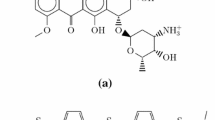Abstract
Mechanisms of intermolecular charge transfer and electron transfer processes in the electronically excited states of solute molecules have been discussed in relation to the exciplex formation and fluorescence quenching reactions in solution. A new model for the electron transfer process has been proposed and studied by the quantum mechanical method. Some naive and intuitive concepts of the electron transfer process have been given a more rigorous theoretical basis. An experiment which can test this model has been suggested. Furthermore, the possible connections among the very weak CT complex formation, exciplex formation and the electron transfer reaction have been discussed in general on the basis of the theoretical considerations.
Zusammenfassung
Mechanismen für den intermolekularen Ladungs- und Elektronenübergang bei gelösten Molekülen in elektronisch angeregten Zuständen werden im Zusammenhang mit der Bildung von Exiplexen und der Fluoreszenzlöschung diskutiert. Für den Elektronenübergang wird ein neues Modell vorgeschlagen, das quantenmechanisch untersucht wird. Dadurch wird einigen einfachen und intuitiven Vorstellungen zum Elektronenübergang eine breitere theoretische Grundlage gegeben. Zur Überprüfung des Modells wird ein Experiment vorgeschlagen. Ferner werden auf der Grundlage theoretischer Überlegungen mögliche Zusammenhänge zwischen der Bildung eines sehr schwachen “charge transfef”-Komplexes, der Bildung eines Exiplexes und dem Elektronenübergang diskutiert.
Résumé
Les mécanismes de transfert de charge intermoléculaire et de transfert d'électrons dans les états électroniques excités de molécules solutées sont discutés en relation avec la formation d'exciplex et les réactions d'extinction de fluorescence en solution. On propose et on étudie quantiquement un nouveau modèle pour les processus de transfert d'électrons. Il donne une base théorique plus rigoureuse à certains représentations naïves et intuitives du transfert d'électron. On suggère une expérience pour étudier la validité de ce modèle. Enfin les rapports possibles entre la formation de complexes CT très faibles, la formation d'exciplex et la réaction de transfert d'électrons a été discutée de façon générale sur la base de considérations théoriques.
Similar content being viewed by others
References
Förster, Th.: Fluoreszenz Organischer Verbindungen. Göttingen: Vandenhoeck and Ruprecht 1951.
Marcus, R. A.: Ann. Rev. physic. Chem. 15, 155 (1964).
Reynolds, W. L., and R. W. Lumry: Mechanisms of electron transfer. New York: Ronald Press 1966.
Leonhardt, H., and A. Weller: Z. physik. Chem. 29, 277 (1961);- In: Luminescence of organic and inorganic materials, ed. by H. P. Kallman, and G. M. Spruch, p. 74. New York: John Wiley and Sons 1962;- Z. Elektrochem. Ber. Bunsenges. physik. Chem. 67, 791 (1963).
Mataga, N., T. Okada, and K. Ezumi: Molecular Physics 10, 201, 203 (1966).
Mataga, N., T. Okada, and N. Yamamoto: Bull. chem. Soc. Japan 39, 2562 (1966).
N. Mataga, and K. Ezumi: Bull. chem. Soc. Japan 40, 1355 (1967).
Mataga, N., T. Okada, and N. Yamamoto: Chem. physic. Letters 1, 119 (1967).
Okada, T., H. Matsui, H. Oohari, H. Matsumoto, and N. Mataga: J. chem. Physics,in press (1968).
Beens, H., H. Knibbe, and A. Weller: J. chem. Physics 47, 1183 (1967).
Knibbe, H., K. Röllig, F. P. Schäfer, and A. Weller: J. chem. Physics 47, 1184 (1967).
Knibbe, H., D. Rehm, and A. Weller: Z. physik. Chem. 56, 95, 99 (1967);-Z. Elektrochem. Ber. Bunsenges. physik. Chem. 72, 257(1968).
Ware, W. R., and H. P. Richter: J. chem. Physics 48, 1595 (1968).
Miwa, T., and M. Koizumi: Bull chem. Soc. Japan 39, 2603 (1966).
Kaneta, K., and M. Koizumi: Bull. chem. Soc. Japan 40, 2254 (1967).
Mataga, N., K. Ezumi, and K. Takahashi: Z. physik. Chem. 44, 250 (1965).
Förster, Th.: Modern quantum chemistry, part III, p. 93, ed. by O. Sinanoglu. New York: Academic Press 1965.
Mataga, N., T. Okada, and H. Oohari: unpublished.
Tomura, M., E. Ishiguro, and N. Mataga: J. physic. Soc. Japan 22, 1117 (1967).
Yokota, M., and O. Tanimoto: J. physic. Soc. Japan 22, 779 (1967).
Yamashita, H., H. Kokubun, and M. Koizumi: Bull. chem. Soc. Japan 41, 2312 (1968).
Hirota, N., R. Carraway, and W. Schook: J. Amer. chem. Soc. 90, 3611 (1968).
Mulliken, R. S.: J. Chim. physique 61, 20 (1964).
Author information
Authors and Affiliations
Rights and permissions
About this article
Cite this article
Mataga, N., Tanimoto, O. Possible mechanisms of intermolecular charge transfer and electron transfer processes in the excited electronic state. Theoret. Chim. Acta 15, 111–122 (1969). https://doi.org/10.1007/BF00528247
Received:
Issue Date:
DOI: https://doi.org/10.1007/BF00528247




